The Front Assist emergency braking assistant with pedestrian detection on Volkswagen Tiguan can help reduce the severity of the accident or – ideally – avoid the accident in the event of an impending rear-end collision.
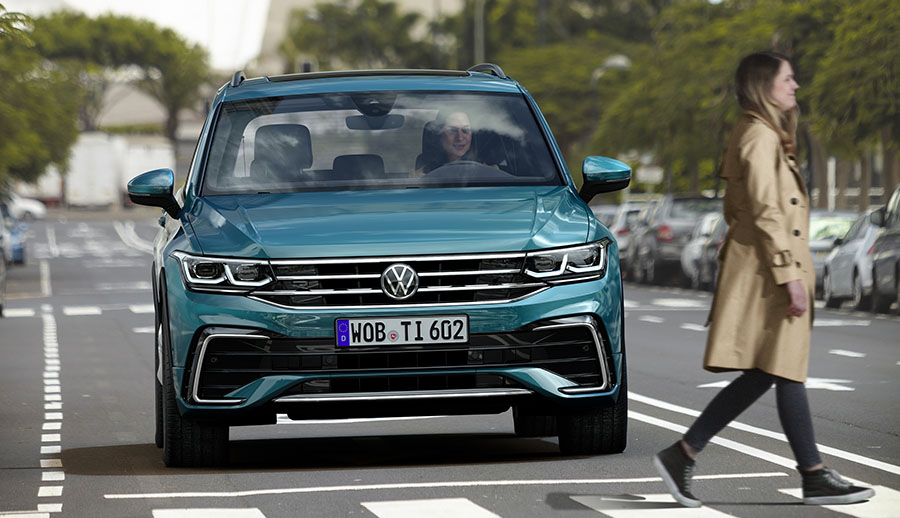
It can recognize pedestrians and vehicles on the road and warn the driver in good time if pedestrians and vehicles are detected. If there is no reaction, the system can initiate emergency braking.
Enable or Disable Front Assist
From instrument cluster
You can switch Front Assist on or off in the instrument cluster display. Using the steering controls, first go to Assist systems and then select Front Assist.
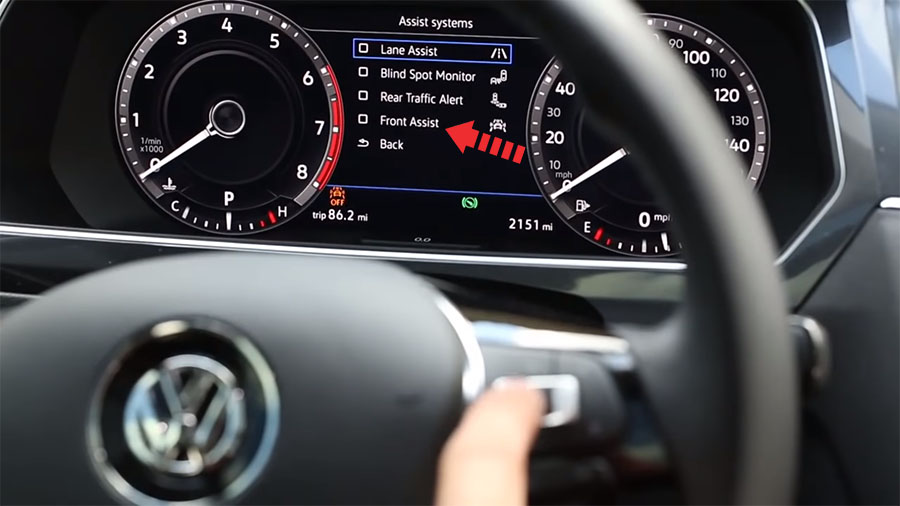
From infotainment system
You can also enable or disable the Front Assist system in the infotainment system by selecting the CAR button, then select SETUP.
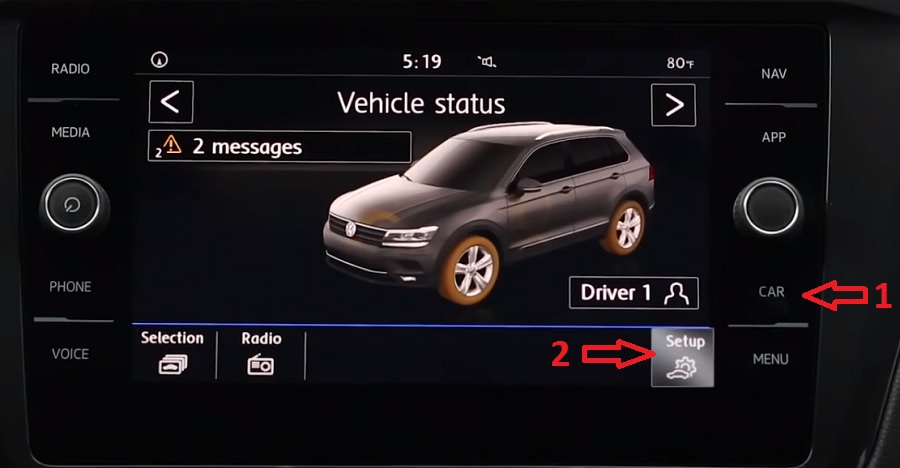
Then select Assistance systems. Scroll down and select or deselect Active next to Front Assist to enable or disable the feature.
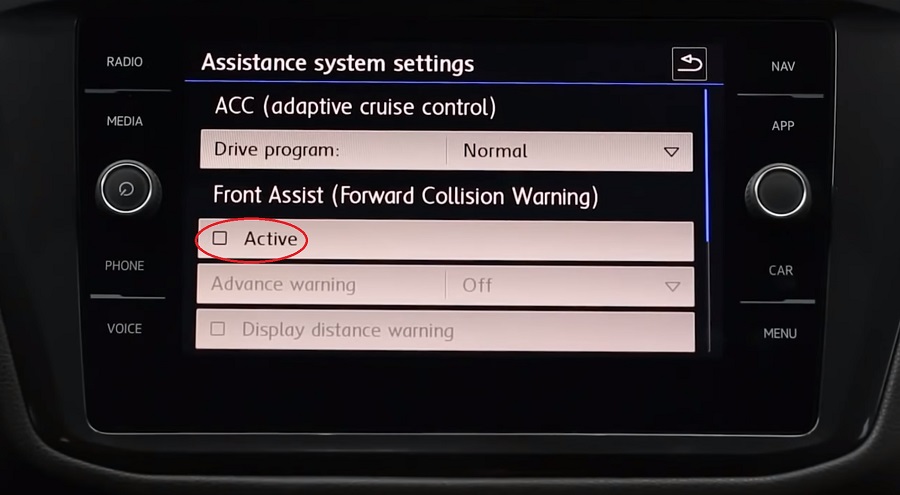
You can also enable or disable Advance warning and Display distance warning from here.
How Front Assist works
Detection of obstacles and vehicles in front
Incidentally, this system has nothing to do with the ACC distance control, which is also available, or the park steering assistant.
Front Assist analyzes the distance to vehicles in front while driving. It automatically determines when the distance to the next car in front decreases.
If the distance is so small that a collision is imminent, the system makes the driver aware of this in a first step using optical and acoustic signals (multifunctional display).
The other measures of the Front Assist
If the system determines that the collision is imminent, it prepares itself while alerting the driver. It sets the brake assistant to the highest sensitivity level and brings brake pads together with brake discs as a precaution.
If the driver does not respond to the first warnings, the system draws more attention to itself with brief, jerky braking.
If the driver now determines the dangerous situation, full braking power is immediately available. In this way he can avoid a rear-end collision.
if the driver does not react to the collision warning, Front Assist can also independently brake the vehicle to a standstill.
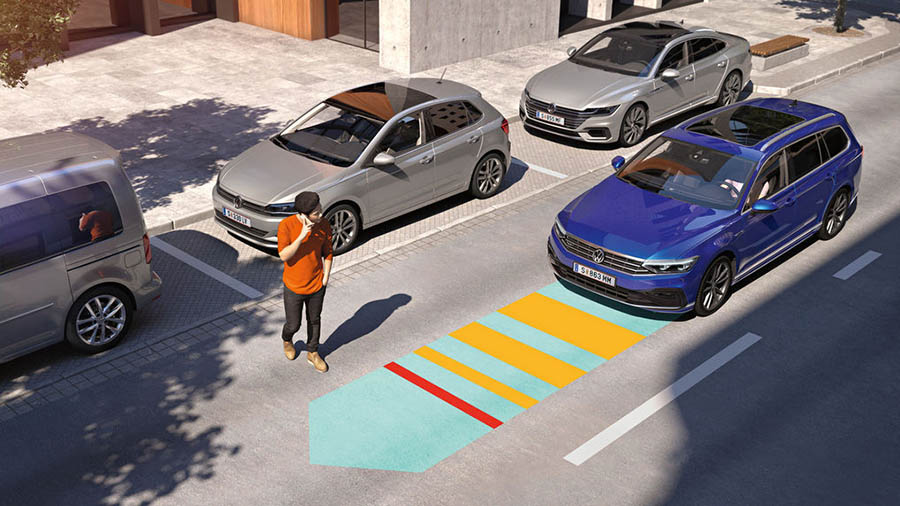
If the driver of the vehicle has independently initiated emergency braking, the environment monitoring system supports him in this braking process.
Incidentally, Front Assist can also perform emergency braking in city traffic if, for example, the driver overlooks obstacles at lower speeds.
Increased safety through modern driver assistance systems
A brake assistant is without a doubt a system that can make a valuable contribution to road safety. Especially if it has an emergency braking function that is able to bring the vehicle to a standstill independently and thus avoid traffic accidents.
Such systems can be supplemented by an automatic distance control, which intervenes depending on the speed while driving in order to reduce the risk of a collision with even a minor braking action.
A park steering assistant can prevent another vehicle from being damaged when parking and can thus also contribute to road safety.
Some manufacturers now offer collision warning systems that are designed to prevent collisions when changing lanes. This is done by the fact that radar sensors determine when there is another vehicle next to your own vehicle and the driver is informed of this by a display in the side mirror. This can prevent the vehicles from being involved in a car accident when changing lanes.
The collision warning using optical signals can also be supplemented by interventions in the power steering so that the collision warning system itself prevents a lane change in the event of an acute risk of collision.
With all the technical innovations that are intended to increase driving safety, however, it should not be forgotten that ultimately it depends on the driver’s attention while driving and that the systems must therefore not lead to a decrease in concentration.









